The Practice of Sitting Zen and Its Teaching

Zen practice is a process of purifying the mind, and in Zen practice quiet sitting is a very important tool. If the practitioner does not know how to sit quietly, he will not be able to integrate practice with his life, and consequently the benefit of practice will be greatly diminished. Most people understand quiet sitting only in the narrow sense: This means picking a quiet place, with legs crossed or uncrossed, and using a method to gradually calm and purify the mind. Such an effort–to calm the mind in a quiet environment–is quiet sitting in its narrow sense. Quiet sitting in the broad sense means keeping the mind quiet, calm and pure at all times, not only during sitting but also in speaking and moving about in daily life. Master Yongjia once said, “Walking is Zen, moving is Zen, the whole being rest at ease in silence or speech, in motion or stillness.” This is quiet sitting in the broad sense. Only through the practice of quiet sitting in the broad sense can one hope to completely elevate and change his or her life.
Skillful Means Based on the Principle of the Mind
The practice of sitting Zen in a quiet place is, in the narrow sense, like a child learning to walk with a walker; a baby has to develop leg muscles until it is able to stand up, whereupon the baby can practice walking. Similarly, is too difficult to see our thoughts clearly while engaging in the turbulence of daily activities. In order develop the ability to transform our thought patterns, we start with quiet sitting in the narrow sense, keep practicing and gradually transition to quiet sitting in the broad sense.
Quiet sitting encompasses many methods, and different spiritual traditions have devised various skillful means for calming and quieting the mind. These practices constitute the initial effort made as part of a long process, and therefore it is too early to focus on results. However, if you insist on results, they are at best conditional in the narrow sense of quiet sitting, as one would engage in a place with eyes closed and nothing to hear. This scenario has certain restrictive qualities, such as that one must temporarily isolate oneself from the outside environment in order to settle the mind. In our everyday lives, though, the ever-changing environment is very complex. Our activities include seeing, listening, talking and physical actions, which together involve the consumption and dissipation of energy.
One’s practice in quietude establishes a foundation for practicing while in movement. This is similar to how you need to make money at a steady job in order not to feel restricted when you want to spend money. So, a practitioner first needs to cultivate in quietude and then train in movement. Some people will say that practice must be done in everyday life; that there is no need to restrict oneself to a temple, formal sitting sessions or scriptural teaching. Though it is not wrong to say so, we must remember that a skyscraper is built from the ground up. Without a basement, first floor, second floor and third floor, there will not be a fourth floor, fifth floor and so on.
It is true that we must practice in everyday life. Without quiet sitting, however, it is nearly impossible to purify one’s thoughts and master the mind in everyday life. Without a special aptitude due to the strength acquired through long practice and accumulated power of concentration, spiritual merit and wisdom, such mastery will remain beyond the reach of the ordinary person.
Zen practice must absolutely become part of one’s daily life, but first it must be actively cultivated. This is done in a quiet environment. It is like a newly enlisted soldier who needs to be trained through combat simulations and then gain experience in actual battlefield situations so as to become a true soldier. If you do not practice quiet sitting in the narrow sense first–if you do not spend time purifying your mind–it is impractical to think you can apply the wisdom of the teaching in your life. Actually, you will not benefit much from the spiritual truth of the teaching, because the fruit of spiritual work cannot be obtained this way.
An old saying expresses it this way: “A bit of tilling, a bit of gain.” Nevertheless, it only applies to spiritual work if the right seeds are planted and the correct method of tilling is used. If the season is not right, your tilling will produce no gain. In other words, both knowledge and practice are important in Zen training. If you do not practice what you know, your knowledge will not be real. If you want to gain from the tilling, you must have the right understanding. You must practice, and you must calm your mind with the right method. This is how results are obtained.
Zen points to the Mind, and in Zen we say that Mind is Buddha. This is the principle that every practitioner needs to know: to achieve the perfect purification of the mind is to become Buddha. To become Buddha, you must reveal perfection of the function and nature of the mind. The meaning of the saying, “If you know Zen without the scriptural teaching, you will talk nonsense every time you open your mouth,” is that even though you may have realized the true mind you do not have the proper conceptual framework to express it verbally. This is a bit like the professor who has received impressive degrees of higher learning from a prestigious university: There is no doubt about his erudition, but for some reason he doesn’t teach well. His explanations lack a logical flow, so the students do not understand them. Such a professor does not have a way method to express what he knows.
Similarly, there are practitioners who understand the mind, but whenever they are asked how the world has come about or why there are vexations, all they can answer is “the Mind.” There is nothing wrong with this, but in order to help people they need a more skillful means of expression. For example, I am here and you are there. The skillful means I would apply are the notions and language that you can understand, which would lead you from where you are to where I am under the appropriate conditions. If the conditions are not appropriate–if the place is wrong, the direction is wrong or the timing is wrong–it would not be a skillful means.
Many Zen masters of the past achieved enlightenment but did not learn the scriptures, so they did not know how to clearly express the knowledge they had obtained and therefore could not teach other practitioners. The ways to express yourself or the language to use have to do with knowledge and theory. A lively mind is needed to make practical use of theory. Even though you have attained and understood the mind, if you are ignorant of the theory or are unclear about it, what you say will be without organization and logic. Worse, if you have absolutely no realization regarding the nature of the mind but have only learned some superficial theory, that theory will frame you and become an obstacle in your practice. If you lack true understanding of the theory, you will misuse it, be constrained by it and mislead others with it.
The obstacles in the mind are found at many different levels. Moreover, humans, arhats and bodhisattvas all have their own obstacles. All the obstacles come from the mind. You speak of the east, but others think you are speaking of the west. This indicates a lack of clarity in your expression. You have knowledge of the moon in the sky, but instead you point at the stars. Speech, when employed as a pointer, must be used carefully and precisely. This is a wisdom that should be cultivated, as wisdom is the function of the mind. If you know the nature of the mind but remain ignorant of it functions, you cannot use it properly.
It is as if you have a polished mirror but do not know that it can turn in different directions. The mirror, despite being clean, can only reflect what you place before it. There is still a limitation, because it cannot move; it cannot operate freely. Our mind is obscured and polluted like a mirror coated with dust, and of course the reflection of a dusty mirror is distorted and unclear. When you are enlightened and your pure mind is revealed, it is like a clean mirror. However, if it does not move or is not supple enough, you will encounter the obstacle of a different level. So, you must learn how to turn your mind with flexibility.
Scripture provides a convenient means of expression, as do language and gesture. Spiritual power and eloquence are also convenient teaching tools, if they are used correctly. These tools are all functions of the pure mind. It is not enough to simply have a pure mind, since it must also be unhindered in its functioning. The scripture talked about “immolation offering to the Buddha.” What does this mean? It takes less time to burn the whole body than to burn the two hands. The phrase “burning two hands” represents the breaking of one’s attachment to forms and concepts. It takes a long time to learn to turn the mirror of the mind with flexibility, just as it takes a long time to burn two hands. The body represents self-attachment, and burning the body is like wiping the mirror clean. This takes relatively less time. Thus the practice of Zen has different levels.
I often advise my students on the errors of spiritual practice. It has been said that in Buddhism many doors–various spiritual practice and methods–were created in order to receive all who sought to enter. However, there must be the right understanding. Otherwise, haphazardly opening those doors will not bring an end to suffering, except adding more birth and death, destruction and ignorance. We must realize that everything, the past, present and future, is created by the mind. We must never deviate from this principle, regardless of what we practice. This is the proper way to utilize all the doors.
The goal of all spiritual teaching is to realize the mind. It is to have a mind that is at ease, in control of itself and able to use spiritual practice while remaining free of attachment until, ultimately, it achieves complete freedom in how the mind functions. In Zen, we say the mind is the source of all phenomena, of all life and of all functions; that it is a straight line from the function of the mind back to the mind itself. After returning to the source that is our mind, we dwell in the mind that is pure and without life and death. We take control and master the various practices. Gradually, we break all our ignorance and attain Buddhahood.
Breaking Attachments to Find Liberation and Practice the Bodhisattva Path
Theravadan Buddhism tries to break attachments through the teaching of the Four Noble Truths, while Mahayana Buddhism tries to break attachments through the practice of the Six Perfections, namely generosity, discipline, patience, diligence, concentration and wisdom. So, the purpose of both Theravadan and Mahayana practice is to break our attachments. The elimination of attachments is the only purpose and path of practice, so essentially there is no such thing as Theravada or Mahayana. They are the same species of tree, but they differ in trunk thickness, height and the appearance of their leaves. Mahayana Buddhism seeks to eliminate attachments through a broader scope of practice, whereas Theravada Buddhism emphasizes an environment of personal endeavor in the elimination of attachments. The difference between the two is in terms of the depth and breadth of the elimination of attachments and the realization of the mind as the source of all phenomena.
Mahayana Buddhism talks about our relationship with other people. It discusses our conduct in relation to things in the world from a larger context, from whence we obtain a view of our attachments and finally break those attachments. Together, the Six Perfections break the attachment generated as the mind functions. The Bodhisattva path, however, is based on liberation and benefit for the self and others. It is also a practice based on the notion that Mind is Buddha; that without the practice toward liberation the Bodhisattva path will be in vain and therefore unable to halt the cycle of rebirth. To seek Buddhahood while deviating from the practice of the mind is like cooking grains of sand in order to get rice.
The grasping of phenomenon therefore causes people to drift in the ocean of confusion. As the Diamond Sutra states, “If a bodhisattva attains the realization of non-self, he eliminates the appearance of self, of others, of all sentient beings, of space and time; he practices all-good without attachment to all-good; this ensures that he will attain the highest, most complete and perfect awakening.” This passage tells practitioners that the Bodhisattva path is based on the practice of liberation, that the road to Buddhahood consists of the diligent training of the mind, and that truly practicing and guarding this principle without deviation is the true meaning of the Bodhisattva path. Any other method will lead the practitioner astray. If a practitioner knows this method but does not practice the method of the mind, the Bodhisattva path will be a mere formality. He will simply busy himself with the ways of the world and thereby waste his life in the ocean of confusion. He will practice what appears to be the true method but is not, adhering to what looks like the true Buddha dharma but is not. Without anybody knowing, he spreads a false teaching to the masses and thereby causes great damage.
Many people today have mistaken the path of an ordinary person with many troubles and attachments as the true Bodhisattva path. A practice based on self-attachment is a path to life and death; it is not a true Bodhisattva path. To spread true dharma and practice the true Bodhisattva path, the emphasis must be placed on breaking one’s attachments so as to benefit oneself and others through his or her words, thoughts and actions. All the different forms of Buddhism–including the various temples, means of spreading of the teaching, and methods of practice–should remain consistent with this principle of liberation.
True dharma or the Bodhisattva path must be centered on the awareness of life and death at every instant. It must focus on the contemplation and familiarization of the mind teaching. Practicing or spreading the Bodhisattva path while neglecting one’s own liberation will make the Bodhisattva path into a cliché, in which it will be impressively ostentatious but decidedly false. Without knowing the nature of the mind, even though you want to be Buddha, what you practice is the karma of life and death. It is the cycle of rebirth. Nowadays, people misuse and misunderstand the spiritual content and the practice method of the Bodhisattva path. They think of liberation as a small tree, in comparison to which they think of a career of benefiting others as being like a big tree. Nevertheless, the tree, whether big or small, must have real roots. The roots represent liberation. They signify freedom from the cycle of life and death and thus benefit the masses at every instant. The roots represent the return to the liberated, pure essence of being while using the pure mind to benefit others, thereby achieving the merit and grandeur of Pure Land. This is the grandeur in which emptiness and phenomena are one and have the same purity.
A deviation from the mind teaching and eradication of attachment means one is no longer on the Bodhisattva path. It might be tempting to believe that practicing the Bodhisattva path lifetime after lifetime means sewing seeds now and practicing in the next lifetime. The reality, however, is likely to be far different. The seeds and karmic reward you have cultivated in this lifetime may not elevate your personality and temperament, nor will they eliminate attachments. The karma you bring to your next lifetime may turn negative and cause you to fall. The unresolved problems of this lifetime will be brought into the next, and karmic reward does not eliminate the problems of the mind. How can this kind of thinking and practice bring you liberation?
Given a clear understanding of the mind’s essence and function, we can break the attachments directly to reveal the true nature of the mind. So, let this understanding and realization mature in your mind. Do not stray from its principle as you strive to elevate, purify and transcend the habitual pattern. If you can practice like this in the present life, what you gain will not dissipate in the next. This is the basis for liberation in your next lifetime. Many people have generosity, virtue and diligence; they look like practitioners, but they may not have a basis for future liberation. Liberation from the attachments of the mind is the basis of enlightenment. If you learn the Four Noble Truths and the Six Perfections in this lifetime without endeavoring to eliminate your self-attachment and attachments to form, you are really seeking enlightenment from outside the mind. Consequently, your learning is based on attachments. The goodness you accumulate will not result in liberation in the next life.
Self-attachment can lead you to learn painting, tea-making, dance or singing, just as it can lead you to learn the Four Noble Truths, the Six Perfections and the Bodhisattva path. There is no basic difference from one to the other. Endeavoring to seek enlightenment from outside the mind without trying to eliminate attachments cannot serve as the goodness that leads to liberation in the future. The karmic reward and spiritual knowledge you accumulate in this lifetime can count only as some positive influence you have acquired within the limitless cycle of rebirth. If you have no knowledge of the mind’s essential nature and its functions–if you have not practiced with the aim of eliminating attachments and delusions–the karmic reward and goodness you gain in this lifetime will not constitute karma of liberation for the next lifetime. Bringing your attachments and karmic reward with you can cause you to accumulate negative karma in your next lifetime.
The central theme of Buddhism is based on liberation and benefit to others. Thus it is necessary to understand the notion of liberation. If your understanding is not clear, you might think your purpose is to practice the Bodhisattva path and cultivate kindness, in which case your practice may not be as solid. There is a general misunderstanding that Theravada Buddhism is the lesser method for those who seek enlightenment on an individual basis, whereas Mahayana Buddhism is not only for benefiting oneself but also for benefiting others. If you can use Mahayana Buddhism to eliminate attachments of the mind as well as other kinds of attachments, your practice is bound to be higher and broader. Nevertheless, if your basic personality is not transformed and self-attachment is not eliminated–if you use the name of Bodhisattva to cling to its teachings but do not put the meaning into practice–you will not obtain the desired results.
The way to use skillful means of teaching is to develop methods and practices that can lead all beings, one step at a time, toward liberation based on the realization of the mind’s essence and function. It is like a big tree whose root system can go very far, but no matter how far-reaching the roots are, they are still connected to the trunk and still bring the nutrients they absorb back to the trunk. There must be reality in the skillful means used to bring the masses back to the realization of the intrinsic mind, or such means will be no different from other activities in the cycle of rebirth. A skillful means of teaching that does not lead the masses to the Truth is an arrow without a target. It is a tree without roots, having nothing to do with the real essence of Buddha dharma.
You may not attain enlightenment with your practice in this lifetime, but you must not insist on the wrong practice. People often misuse the practices of Buddhism or the notion of the Bodhisattva path. The Bodhisattva path is a concept of the elimination of attachment based on a profound understanding of cause and effect, and the Six Perfections are collectively a practice to eliminate attachments. If there is no transformation and improvement in your personality and no elimination of your attachments, or if you practice generosity, virtue, patience and diligence with your attachments, vexations, discrimination and habitual tendencies, you are far from the spirit of the Bodhisattva path. In such a case, your practice is not a basis for liberation and the benefit of others.
Finding the Master by Going Against the Stream
Consider the following ancient teachings: “Mind is Buddha, but only a pure mind can be liberated.” “A mind can function with either defilement or purity.” Through the statements we can begin to perceive the personal responsibility that each of us has in regard to liberation. To use the mind’s function to reflect and find the true mind, which is the source of life–to live from the true mind at the source of all phenomena–is the essence of Buddhism. That is what is meant by the patriarch’s saying, “Mind is Buddha,” and it is what you need to know in your practice. The real skillful practice must start with the essential fact that “Mind is Buddha.” In the past, people would ask the patriarchs of Zen, “Is there not an expedient practice for ordinary people?” The important point is to lead the masses to the realization of the mind. A few words or a gesture from the master would often be enough for this purpose.
The Tsuiwei Master Wuxue was the first Zen master that the Longya Master Juxun visited. The latter stayed for a month, during which the Tsuiwei master said nothing to him. One day Master Juxun went to Master Wuxue and asked, “I’ve been here for a month, but you have not taught me anything.” Master Wuxue said, “Why is this bothersome?” This was his skillful means for teaching the masses; the answer was already in the question, “Why is this bothersome,” but Longya Master Juxun did not understand.
One day, Master Juxun asked Master Wuxue another question: “Why did Bodhidharma come from the West?” The Tsuiwei master said to him, “Bring me the incense paddle.” The moment the incense paddle was handed to him, Master Wuxun used it to beat Master Juxun. Master Juxun said, “It does not matter if you beat me, I just want to know why Bodhidharma came from the West.” Master Wuxue had already given his answer. The beating with the incense paddle was a skillful pointer, but the Longya Master Juxun still did not understand. In Zen, the purpose of “skillful means” is to teach someone to use the mind’s function to reflect back to the mind in order to recognize the nature of the mind. Therefore, it is very direct, as in knowing who the speaker is from his spoken words or knowing who the walker is from his manner of walking. This is why the patriarch came from the West.
Monk Shuiliao, in his visit to Mazu Daoyi, asked, “Why did Bodhidharma come from the West?” He wanted to know the real reason Bodhidharma came to China from India. Mazu Daoyi said, “Prostrations.” To ask for teaching you must prostrate yourself. In the old days, when a monk wanted to ask for teaching from a monk or the abbot of a temple, he had to dress properly first. This meant wearing a proper cassock ensemble, so a long-sleeved shirt would not do. He then had to display his Buddhist wares, kowtow and kneel for a long time. Only after all this ceremonial decorum could he respectfully ask for teaching.
Mazu Daoyi said, “Prostrations,” whereupon Monk Shuiliao prostrated himself. When he wanted to get up, Mazu Daoyi kicked his chest and stepped on him. The moment he was stepped on, Monk Shuiliao knew the answer. In that instant he knew why Bodhidharma had come from the West. He stood up, applauded, laughed and said, “How interesting! How interesting! A thousand kinds of Samadhi, all the limitless teachings, and all you need to do is to seek the source from the tiniest of things.” What is this tiniest of things? The mind’s function is delicate. It is to seek the source of life from a trace of life, to seek the source that produces the function from the function, to know the creator from his creation: This is to seek the source from the tiniest of things. This is the skillful means of the patriarch.
The best kind of skillful means is the one by which you show other people your own mind, know the nature of your own mind and always teach other people how to know the nature of the true mind. Any deviation is but the fashion of the day. Some people will say that people have different natural tendencies, so the means of teaching should be different. That is not correct. The Buddha and the patriarchs were very diligent in getting to know the true mind, whereas modern man is burdened with self-attachment and a complicated environment. If he does not learn the patriarch’s practice, wisdom and virtue, how can he hope to achieve anything? If you want to climb the bodhi tree but instead climb a palm tree or a cactus, you are making use of the wrong practice. It can do harm to your body and your life.
The old way of practice is not different from the new way in terms of avoiding the cycle of rebirth. In the past it was about the mind, in the present it is about the mind, and in the future it will be about the mind. As the poet Li Bai said, “Today’s people do not see the moon of the past, but today’s moon used to shine on people of the past; people of the present and people of the past are like flowing water, all the people who have looked at the moon are like this.” There is no difference between the mind of the past and the mind of the present; the mind of a sentient being is the same as a Buddha’s mind. Even if the modern environment is more complicated and modern man’s negative karma is heavier, the teaching and practices that are tailor-made for man cannot deviate from the mind. The roots can be a bit deeper or broader, but they must be connected to the trunk. The trunk is the mind; any practice that does not connect with the trunk is not a bodhi tree. It can be a cactus or a palm tree, but in such a case true liberation will not be what one achieves.
The Longya Master Juxun later visited a Lingji master and asked him, “Why did Bodhidharma come from the West?” The Lingji master asked Juxun to bring over a straw seat, and then he used it to beat him. Master Juxun, who had a strong will to learn, still answered, “It does not matter if you beat me. I just want to know why Bodhidharma came from the West.” Actually, the Tsuiwei Master Wuxue and the Lingji Master Yisuan had answered him very clearly. Later, he visited Master Deshan and asked, “What would you do if a student brandishes a sword and wants to cut off your head?” What would a master do if a student wanted to cut off his head with a sword? This is a kind of test between a student of Zen and his master. Master Deshan showed his neck and gave a loud shout. The Longya Master Juxun said, “Now your head is off.” Master Deshan laughed out loud and left. This is a koan.
Master Juxun left Master Deshan to visit the patriarch of the Tsaodong sect, Dongshan Master Liangjie. Master Liangjie asked whom he had visited, and Master Juxun told of the previous koan. Master Liangjie then said, “Now you show me Deshan’s head.” Master Juxun had not achieved enlightenment at this time, and after Master Liangjie’s words he knew that he was wrong. He was thus aware that his mind turned with the phenomena and that he had failed to understand Deshan’s real meaning.
Eventually Longya Master Juxun asked Dongshan Master Liangjie, “I have been here for a month, but you do not seem to have taught me anything.” The Dongshan master replied, “And you blame the old monk?” By this he meant, “How can you blame me? Blame yourself!” He had given his teaching every day. How he acted, how he lived, how he sat, how he slept: all these were of the mind’s functioning. These are the ways of the mind, and this is the dharma of the mind. Dharma means function and phenomena. The mind is where the phenomenon is. The mind has no form, but the function and manifestation represent the form of the mind. The mind’s function and manifestation are where the mind resides.
Longya Master Juxun asked Dongshan Master Liangjie, “Why did Bodhidharma come from the West?” Master Liangjie said, “I will tell you when Dong waters flow upstream.” The Longya Master Juxun became enlightened after these words. Simply, the phrase “Dong waters flowing upstream” means to see one’s own mind from a reflection of the mind’s function. From the mind’s function, you recognize that which creates the function.
The skillful teaching of Zen is a return to the mind from all the phenomena it creates. It is to know the formless mind from its functions. Even if we do not become Buddha in this life, we still have to know the road to Buddhahood. We cannot err, nor can we mix it up. No matter which Buddhist sect you follow, the purpose of practice remains the elimination of attachments. There is nothing else to practice. You cannot learn Theravada, Mahayana or Vajrayana Buddhism while bringing along your attachments. If you bring along your attachments, any Buddhist teaching you learn will lead to the cycle of rebirth.
Teaching sutra is not necessarily teaching Buddhism. If you do not point to the mind–if you do not eliminate your attachments–it is neither sutra nor Buddhism. What you know may not be right. It depends on how you use it. If you learn Buddhism with your attachments and delusions, if you do not use the karma and principles of Buddhism to eliminate your attachments and delusions, if you do not see this as a process of going upstream and of reflection, all that you learn will lead you to the cycle of rebirth. It is a cycle that no manner of delusion can transcend.
The difference between staying within the cycle of rebirth and escaping it is whether you can liberate your mind. A mind that is not liberated stays within the cycle of rebirth. The ancients had little negative karma but considerable wholesome karma. Contrastingly, modern man has more vexations, attachments and negative karma, so he needs to apply himself more. To practice is to return to the only path possible: The mind is the source of all phenomena. Therefore, everything is the creation of the mind, whether it is Pure Land or the cycle of rebirth. If you do not return to the mind from its creation and find the master within, you will engage the cycle of rebirth.
Heaven and earth are different places in the cycle of rebirth, so they are both part of it. Because we do not know the nature of the mind, we cannot find a resting place. Instead, we move and change with the mind’s function at every instant. The land of the Buddha, heaven, earth, hell and the hungry ghost all are creations of the mind. Humans think humans are real, ghosts think ghosts are real, and celestial beings think celestial beings are real. Everything owes its existence to the mind, and everything resonates with the mind. Most people cannot accept that the world and the people they see are created by their minds; they cannot believe that things are what their minds reveal and resonate with. They feel that what they see is actually there.
Everything resonates with the mind; a ghost may not understand if you say that its mind reveals the world it sees. A celestial being may not understand it, either. Whatever the mind manifests will become a phenomenon. It is what you experience. If the mind gives rise to the thought of anger, you will feel angry. From the perspective of the mind, there is not a thing, not a phenomenon, that is not created by the mind and that does not resonate with the mind. When there is function, there is creation; when there is no function, there is no creation. When there is such a function, there is such a creation. The world of the phenomena is borderless and limitless, but the mind alone creates it.
We practice in order to collect the coarse, grasping mind and make it subtle and pure. We then seek to know our own thoughts with this subtle and pure mind, and to find the master at the source of our thoughts. This master is the source, and from that point you can rest, elevate, improve and open a path toward the purification of your mind. One should not simply state modern man needs a modern practice method. Without the elimination of attachments, any other method you learn will be of the cycle of rebirth.
With Quiet Sitting in the Broad Sense, You Can Go Back Home
Buddhism has temples, teachers, sutras, monks and nuns, the Mahayana, Theravada and Vajrayana traditions. All these have as their purpose the elimination of attachment. If you do not go in the direction of eliminating the attachment to ego and phenomena, all the ceremonies and practices such as taking vows, the Four Noble Truths and the Six Perfections will exist in name only and you will fall into the cycle of rebirth. You will be talking the talk but not walking the walk; you will fall through the cracks of your mind structure. You will say that you are busy and have a lot to do, but your efforts will be in vain.
The cultivation of goodness and karmic reward in a temple will not turn into a cause for liberation in your next lifetime. So, how does one achieve liberation? You need to start by knowing the ways of the mind and eliminating your mind’s attachments. There are psychologists, doctors and counselors who have learned a great deal of counseling techniques, but there are many questions in their minds. If they seek or learn from the outside but do not use what they have learned to eliminate attachments and vexations, all their acquired technique will prove to be of little use.
The phrase “to know the teaching but not the essence” implies having a broad knowledge of the philosophy and the scriptures of all the sects but not the real message beyond them. There was a Zen master who learned all the Buddhist teachings. He went to visit the Yanguan Master Qian. Master Qian asked him, “What are the different kinds of dharmadhatu (dharma realms) that the Avatamsaka Sutra talks about?” The master answered, “The Avatamsaka Sutra states that there are limitless kinds of dharmadhatu. Simply put, it says that things do not hinder dharmadhatu; dharma does not hinder dharmadhatu; absolutely nothing hinders dharmadhatu.” Master Qian waved his long sleeve, sending specks of dust into the air, and asked, “What kind of dharmadhatu is this?” The master could not answer. This is an example of “to know the teaching but not the essence.”
Your understanding, if it is not based on the realization of the essence, will fall apart the moment you deviate from the sutra or the sect you have studied. You do not understand the real source of life, nor do you know the ways of the mind. Thus, as you fall into the pattern of dogma and logic developed by others, you cannot obtain the real benefit of the teaching. Therefore, we have the statement, “To know the teaching but not the essence, is like a snake sliding into a bamboo pipe.” If you delve into philosophical analysis, thinking that an appearance of the moon is the actual moon, it is like a snake that slides into a bamboo pipe but cannot slide out. The ancients used to say this was like mistaking somebody else’s village as your own. You mistake the analysis of the scriptures as the purpose of your learning, and consequently you do not understand that you need to use everything you learn to eliminate attachments and awaken the mind.
The scriptures contain the words of the Buddha. His diligent efforts made him the enlightened one, and he taught the masses, speaking the teachings of the scriptures from the purity and stillness of his mind. The pure, skillful, all-pervasive teachings come forth from the purity of Buddha’s mind. That is why the Buddha said that the scriptures he had not spoken far outnumbered the ones he had spoken. The scriptures do not deviate from the mind; they do not deviate from describing the nature of the mind. When they do, they are no longer the Buddha’s words.
Many people like to hear scriptural teachings. Once you hear them, you have to practice them. A scripture is like a bamboo pipe; if you cannot get out once you get in, then you are like a vendor of melons who has praise only for his own melons. The question is not whether a melon is sweet or even whether it exists. If a melon really exists, and if it is really sweet, it will be a true skillful teaching. If you have only heard of a sweet melon but have never eaten it, you must be careful: The melon may not exist, or if it does exist it may not be sweet. Most of the time, this kind of teaching is only the fashion of the day. It will not lead you to liberation and enlightenment but will instead hold you within the cycle of rebirth.
The phrase “to understand the sect and the teachings” means understanding the mind and the dogma that describes the nature of the mind. It means you can understand and practice the dogma. Once, the Yunmen Master Wenyan asked some people to move some firewood for him. Master Wenyan threw a log on the ground and told his disciples that it was all a Buddhist sect talked about. What is this, then? If you know it, then it is a Buddhist sect; if you do not know it, it is only a log.
Consider the statement, “To realize the essence and the teachings is like the sun shining in the void.” To understand and practice the ways of the mind; to be able to explain dharma to the masses, understand its depth and be orderly in its explanation is like the sun shining in the void. The mind is like a polished mirror. It can have whatever manifestation it wants without a trace of disorder. It can be subtle, too. At the subtlest level, the mind is not only pure. It understands its functions clearly, too.
A polished mirror is very good, but if it is only polished it is like an empty, unfurnished house. In such a place, you do not have chairs for people to sit, so you cannot invite people over for tea. If the polished mirror can turn at will, and thereby reflect the entire world and all phenomena, it is like a fully furnished house. Thus we have the statement, “If every thought can reveal its source, it is like having a path leading to all mountains and all rivers.” If you do not have this kind of mirror, you must practice in order to have it.
A pure mind is Buddha, and all the phenomena of life are created by the source of life. All the vexations and awakening are functions of the mind. Sickness, karma, obstacles, happiness and spiritual virtues are all functions of the mind. So, if you want happiness, health and an absence of vexation, you must practice. All the phenomena of life are created by the mind. If you do not deal with the problem of phenomena, you will neither fulfill your wishes nor attain the ability to let go. So, you have no choice other than to practice. The Buddha told us about how to become Buddha; how to be the master of our own lives. In other words, the Buddha told us how to be happy, healthy and perfect.
Quiet sitting has a narrow sense and a broad sense. Quiet sitting in the narrow sense is to practice in a certain place. However, you must practice concentration so as not to become agitated along with your circumstances in daily life. The founding master of the Lingji School said, “You must sharpen a knife after you use it.” The state he talked about is one of resting peacefully within emptiness. Most people have not attained this state, but all the same, a knife needs to be sharpened after use. To practice in quietude as well as in movement is an unchanging principle.
Quiet sitting in the broad sense is to know one’s mind, to sit quietly, to recite sutras, to praise the Buddha, to walk, to see the mind’s function at any instant, and to rest peacefully with the nature of one’s mind. When you rediscover the mind that is the source of your life, you will realize that the mind is peaceful, quiet, pure and free of ego. This is the nature of the mind, and it is intrinsically so. To rest peacefully with the true mind is to achieve real concentration and real peace, in which the nature of your mind appears to you constantly. Thus we have the statement, “Walking is Zen, moving is Zen, the body is at ease in silence or talking, in movement or stillness.” This is quiet sitting in its broad sense.
It is of no use if you do not practice quiet sitting in the broad sense too, because your concentration will eventually dissipate, your mind will not be still and pure, you will become agitated and confused along with your circumstances, the result of which will be subject-object duality, the cycle of rebirth, vexations, suffering and obstacles. Just like a confused shopkeeper who does not know what he is selling, you are a confused person if you do not understand your own mind, cannot return to your own mind, and rest within your own mind.
The realization of enlightenment, of bodhisattva and of Buddha are all results. They are states, and karma, of existence. You have to practice along this path, because these are the results of reflecting on and purifying your own mind. If you are not diligent, there will be suffering. This is what the Buddha and the patriarchs talked about. If you deviate from this, you will have no achievement in your practice. If you cannot reveal the nature of your mind, you can only grasp and change with the functions of your mind.
Remember that the mind’s function is boundless and limitless, as it is the cycle of rebirth. If you do not know your mind and its functioning, your practice will be one of attachment. It will be plagued by obstacles and caught in the cycle of rebirth. However, the purpose of practice is to know the mind, let the mind rest peacefully and understand the functioning of the mind. If you know the direction of your practice, you will approach it correctly. The speed of your practice is another matter, but the important thing is that you should not do it wrong or be ignorant of the standard. If you do not have a standard, there will be confusion and ignorance no matter what you learn, and you will not know how to collect your mind. According to the patriarchs, “If you know Zen without teaching, you will talk nonsense every time you open your mouth. To know the teaching but not the essence is like a snake sliding into a bamboo pipe. To understand both the essence and the teachings is like the sun shining in emptiness. All creation reveals the source, all mountains and all rivers are connected by a path.”
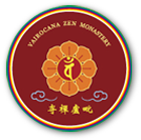






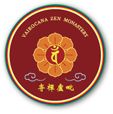
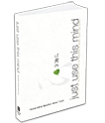

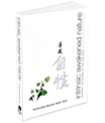
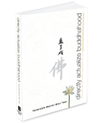

There are no responses so far.
Leave your response
You must be logged in to post a comment.